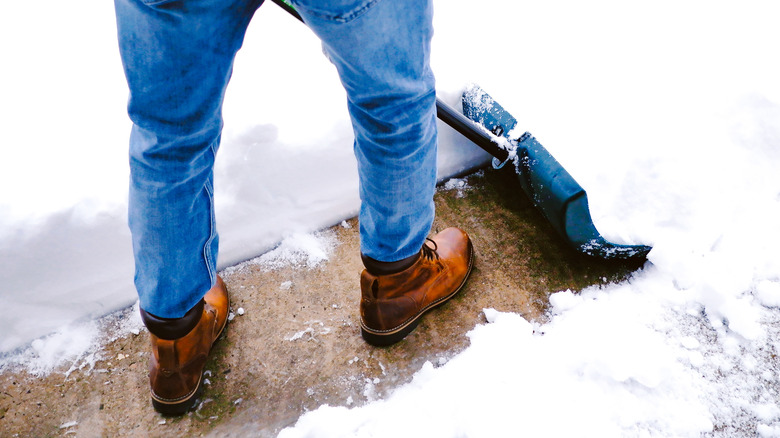Mistakes You're Making When Using Rock Salt To Prevent Slips & Falls On Concrete
When winter strikes, you're sure to be on the lookout for sand or salt to melt ice for safety on your driveway, sidewalks, or steps. You might settle on rock salt, which consists of large and chunky halite crystals that contain some trace minerals. Rock salt is able to lower the freezing point of water, which is why it works to melt ice and to make it easier to remove snow from your concrete driveways and sidewalks. However, rock salt can cause some issues for your concrete surfaces and the ground surrounding them. So, you'll want to avoid some common mistakes when using this material to eliminate slip hazards on the concrete around your home or business.
When you're initially pouring concrete for steps, one technique worth considering to prevent slippery steps is to add rock salt to the concrete while it's wet, called a rock salt finish. After pouring the concrete, you can press a layer of rock salt into the surface . As the concrete cures, the rock salt dissolves and creates a texturized, slip-resistant layer. However, you have to use this technique carefully. If you live in an area that has severe temperature drops that create regular freeze-thaw cycles, using a rock salt finish is a mistake. It could degrade the surface of the concrete, allowing water to easily penetrate the porous material. As the water freezes and thaws, it could lead to spall on the surface, meaning tiny pieces of the concrete break away from the main slab, causing significant pitting or flaking.
Avoiding mistakes when using rock salt to melt ice and snow on concrete sidewalks and driveways
When you live in an area with frequent snow and ice, removing it from concrete steps, sidewalks, and driveways is easier when sprinkling rock salt over the top because it prevents ice from forming down to temperatures of about 5 degrees Fahrenheit. However, the use of rock salt this way can indirectly damage concrete. When the chemicals in the rock salt react with the chemicals in the concrete, calcium oxychloride molecules form. When these molecules move inside the porous concrete, they can cause cracks and crumbling, putting you in a situation where you'll have to consider the cost to repair concrete cracks.
With this potential for damage in mind, one mistake many people make is not fully removing the ice and snow after using the rock salt to melt it. Shoveling or sweeping the rock salt, snow, and ice off the concrete prevents any salt buildup on the concrete that could cause damage over time. When you move the melted snow and ice that has rock salt in it, dropping it on your grass is another common mistake. Excessive rock salt on the lawn pulls moisture from the soil, which can harm your grass the following spring. One final mistake is not preparing your concrete for winter. You could add a concrete sealer before freezing temperatures and wintry precipitation arrive. Such sealers prevent water and salt absorption into the porous concrete, helping avoid damage when you use rock salt.

